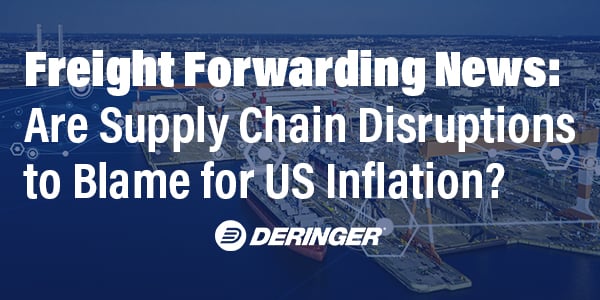
The skyrocketing costs to ship goods—from Halloween candies and costumes to toys and decorations for Christmas—may soon hit consumer pocketbooks.
Companies once paid around $1,500 to ship a 40-foot container of cargo by sea from Shanghai to the West Coast. Now shippers pay an unprecedented $10,500—a 600% increase over the seasonal average of the last five years.
Shippers looking for an alternative have turned to airline freight, which carries one-third of the world’s cargo. Exercise bike manufacturer, Peloton, for example, began shipping its bikes by air. These switches have jacked up airline freight rates. Today, airline freight prices also are 400% higher than before the pandemic.
As massive supply chain impacts rock the boat, shippers have borne the additional shipping fees themselves. But with forecasts that predict sky-high rates throughout peak season and into the New Year, shippers will eventually pass these costs on to consumers. Shippers will absorb higher-than-normal costs when they are up 10%, but not when shipping fees are up to nine times as high.
With over 80% of all imports transported by sea, freight-cost surges threaten to inflate prices for everything from toys and car parts to seafood, coffee, and chocolates, spurring concerns of even more accelerated inflation.
We’ve already seen inflationary forces playing out with lumber—transitionary inflation tripled its price in the second quarter. Aluminum hit its highest level in a decade last month after a coup knocked out Guinea manufacturers. And new vehicles now sell for over sticker price because of a semiconductor shortage.
What is causing these issues?
Carriers cite four main reasons for skyrocketing shipping costs
- COVID restrictions
- Equipment shortages
- Port congestion
- Demand outpacing supply
These factors increase shipping rates, premium surcharges, and detention and demurrage fees. Experts predict this scenario will continue well into 2022.
COVID Restrictions Impact Shipping
COVID restrictions will continue to challenge the industry. Every time a vessel worker tests positive for COVID, countries must decide whether to let in the ship. And as dockworkers test positive in port, terminals may delay loading and unloading of cargo.
Last month, China began experiencing its worst COVID outbreak in over a year, requiring authorities to enact dramatic measures to stop new infections. One action was to suspend operations at the Ningbo-Zhoushan Port, a critical terminal servicing North America and Europe, after a confirmed case of COVID-19.
Inflationary Impacts of Equipment Shortages and Port Congestion
Research commissioned by the Pacific Maritime Association finds that equipment shortages, capacity constraints, and logistical constraints throughout supply chains have led to a backlog of container vessels and marine vessels at West Coast Ports. East Coast ports are not faring much better. Ports along the East Coast report a chassis and container shortage, as well as a labor shortage.
Experts blame the ongoing container and equipment shortage on the pandemic. Carriers pick up fewer containers, leaving containers stranded at inland depots or stuck in port. Port congestion also plays a role. It contributes to longer than normal wait times at key ports and lengthens turnaround times for containers.
Port congestion also reduces the inventory of available containers. As September began, there were 48 ships parked outside Los Angeles and 48 in Long Beach. Each ship holds an average of 10,000 TEU. That’s a lot of containers sitting unused.
Of course, ports are responding to the situation. The Boston/Conley terminal will use three cranes that can unload 13,000 to 14,000 TEU vessels beginning this month to move Northeast cargo faster. Seattle also added five cranes to expedite cargo.
Exporters are pushing governments to regulate the export of empty containers. Some countries were paying a premium for empty containers, making it more lucrative to ship empty containers than wait for containers to turn around in port. Exporters also are asking governments to release about 20,000 containers currently abandoned or detained.
Skyrocketing Demand and Altered Buying Habits
The pandemic ushered in product shortages, panic buying, and heightened demand. Who can forget the empty shelves when one tried to purchase toilet paper, cleaning products, or acetaminophen?
The pandemic also changed how people bought goods. Consumers upped their online shopping and shifted funds they might have spent on vacations into electronics and other consumer goods. People have more money to spend, and they want their goods now.
Shippers are responding to heightened demand by paying unprecedented prices to move their goods. But what happens when the goods ordered for Halloween or Christmas arrive after the holidays? And, what happens when shipping rates plummet as the market returns to normal, but shippers have a warehouse full of products they paid 400% more to get here?
In an unpredictable shipping climate, companies must plan ahead and order only what they need. Otherwise, they may lose money on goods that arrive late. It will become impossible to pass on costs to consumers once the market resumes normal operations.
Experts predict demand will decline once pandemic fears wane and people can spend more money on travel and entertainment.. Savvy shippers are planning now for next year. They pass on additional shipping costs through higher prices for goods when they can, but also take a measured approach to how much cargo they bring in.



